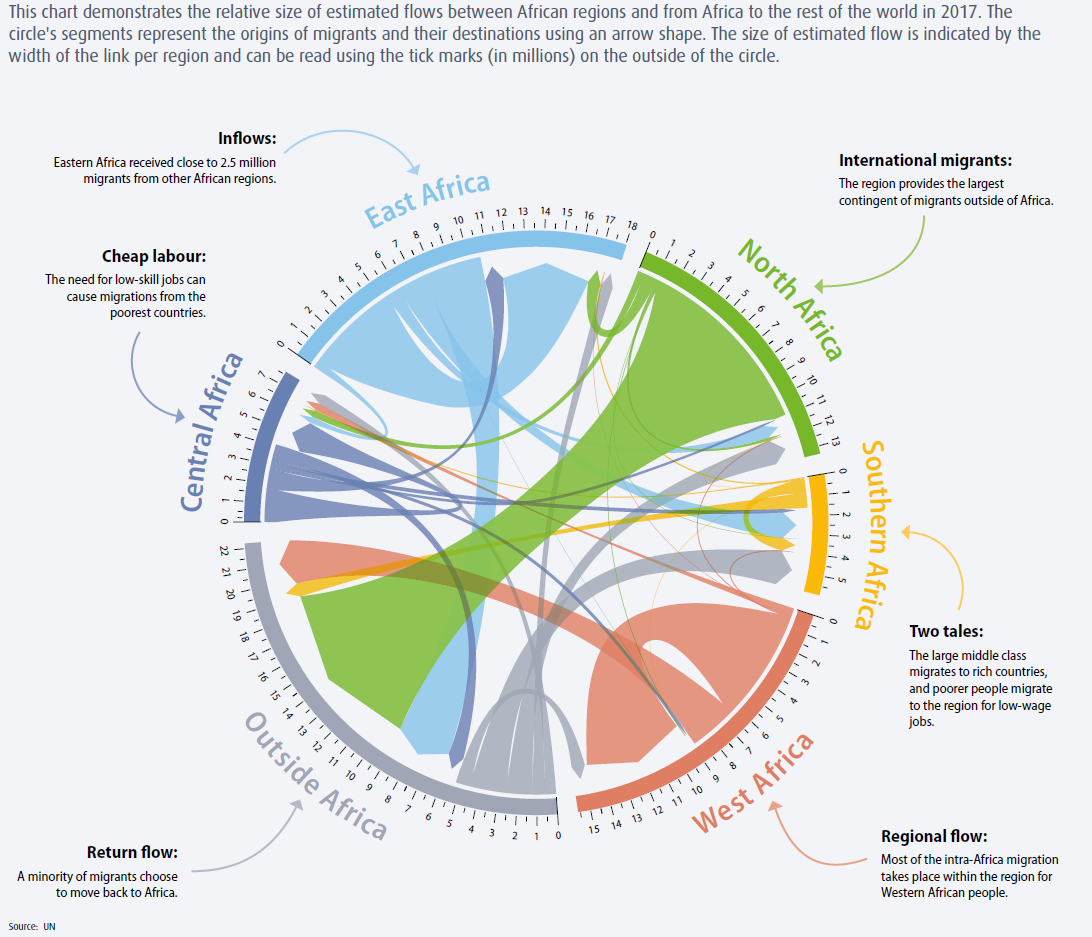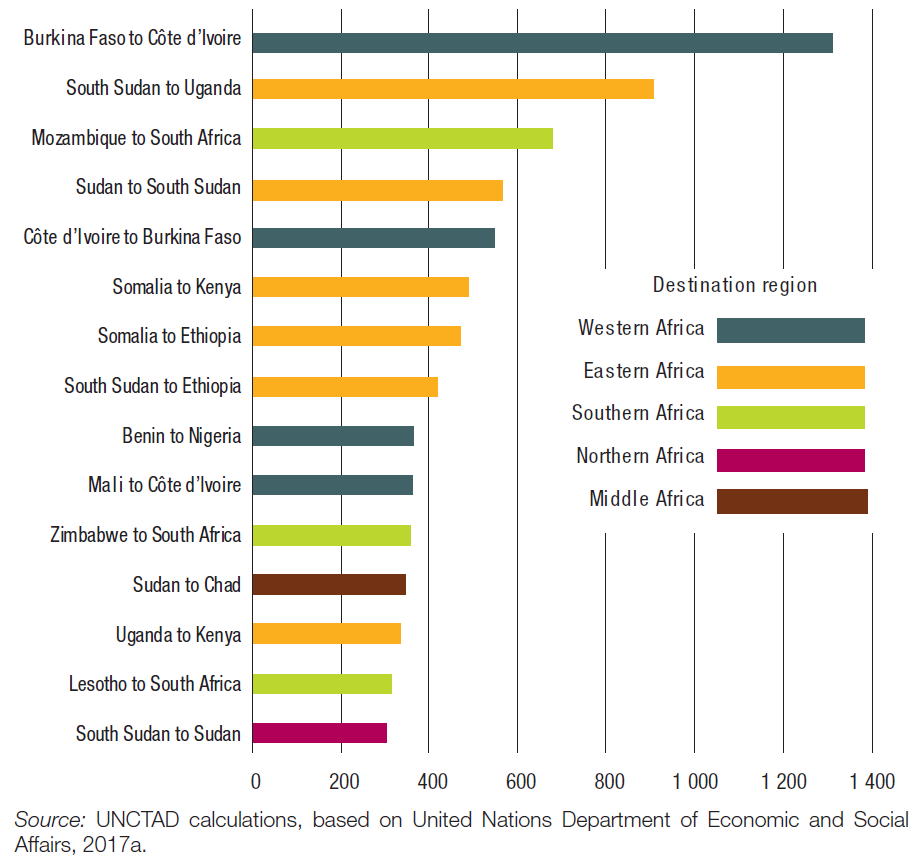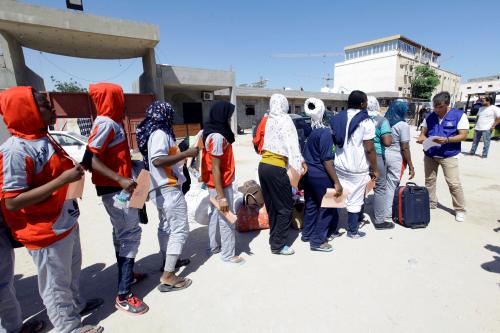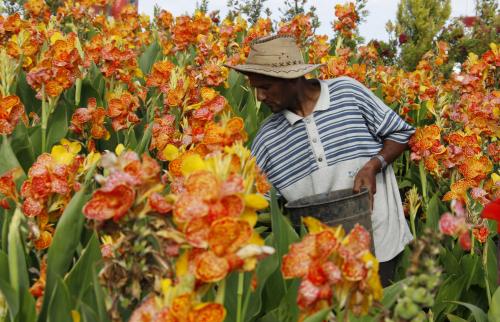Last week, the United Nations Conference on Trade and Development (UNCTAD) released its annual Economic Development in Africa report. This year’s report, “Migration for Structural Transformation,” documents African migration trends and highlights the economic impact of migrants and their potential for augmenting growth. Recently, the African Development Bank also released its Annual Development Effectiveness Reviews, which included a section on African migration. A key takeaway from both reports is that the majority of African migration is within Africa—and usually to neighboring countries.
As Figure 1 from the Annual Development Effectiveness Reviews 2018 shows, in 2017, the largest migrant flows in Central, East, and West Africa were to other countries in their respective regions. Interestingly, there was very little migration between East Africa and West Africa in 2017. Two other notable findings from the report are that the middle class in Africa migrates to the region’s richer countries, and the need for jobs is a major driver of migration in poorer countries.
Figure 1. Where the people of Africa migrate

Looking further into intra-African migration, Figure 2, from UNCTAD’s Economic Development in Africa report, highlights the 15 top corridors for intra-African migration in 2017 by migrant stock. International migrant stock is an estimate of the total number of foreign-born people in a country at any given point in time. In 2017, the Burkina Faso to Côte d’Ivoire migration corridor had the largest stock of migrants at 1.3 million. Migration in the other direction, from Côte d’Ivoire to Burkina Faso, was also in the top five. According to the report, these and other migration corridors (Figure 2) in West and Southern Africa are economically driven as they connect migrants to jobs in farming and informal trade. On the other hand, several of the migration corridors ending in East Africa have developed due to conflict or political instability in countries like South Sudan and Somalia. East Africa also has several smaller economic corridors with migrants moving around the East African Community (EAC) countries, largely due to relaxed labor laws for migrants from EAC countries.
Figure 2. Stocks in top 15 intra-African migration corridors, 2017 (thousands)

Benefits of migration for destination countries
More broadly, the Economic Development in Africa report finds that intra-African migration is beneficial for structural transformation in destination countries in Africa; finding that a 1 percent increase in the number of immigrants in the destination country may increase manufacturing value added by 0.26-0.43 percent. Similarly, more immigrants also raises intra-sectoral productivity, with the positive effect rising with the increasing level of immigrants employed in those industries. There are additional positive effects on structural transformation when the level of education in the origin country is higher than the destination country. To improve migrant integration, the report recommends expanding private sector platforms to connect recruiters, employers, and migrants. Recommendations for destination countries include improved regulations for working migrants that would provide better worker protections and facilitate the payment of taxes. Finally, the report recommends that origin countries increase engagement with the diaspora to further the development of those origin countries.







Commentary
Figures of the week: Internal migration in Africa
June 7, 2018